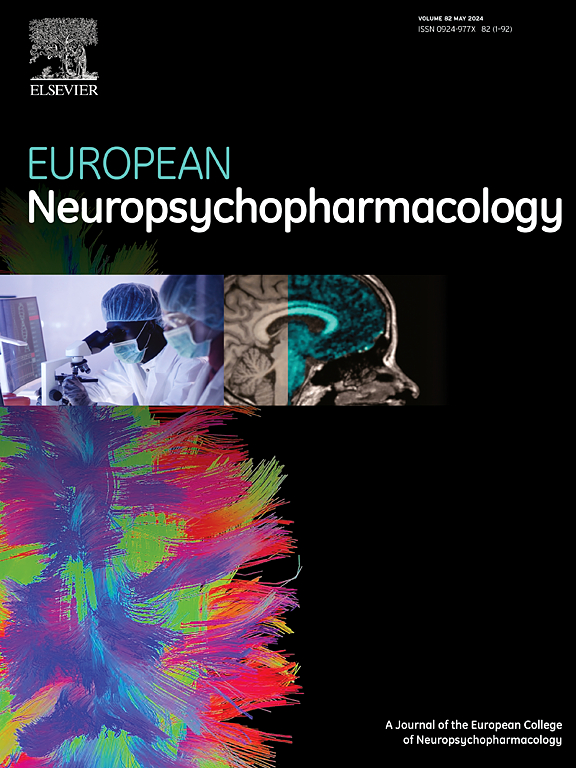GENETIC ELUCIDATION OF ULTRASONOGRAPHY FETAL ANOMALIES IN CHILDREN WITH AUTISM SPECTRUM DISORDER
IF 6.1
2区 医学
Q1 CLINICAL NEUROLOGY
引用次数: 0
Abstract
Recent evidence suggests that certain fetal anomalies detected upon prenatal ultrasound screenings may be associated with autism spectrum disorder (ASD). In this cross-sectional study, we aimed to identify genetic variants associated with fetal ultrasound anomalies (UFAs) in children with ASD. The study included all children with ASD who are registered in the database of the Azrieli National Center of Autism and Neurodevelopment and for whom both prenatal ultrasound and whole exome sequencing (WES) data were available. We applied our in-house integrative bioinformatics pipeline, AutScore, to these WES data to prioritize gene-disrupting variants (GDVs) probably contributing to ASD susceptibily. Univariate statistics and multivariable regression were used to assess the associations between UFAs and GDVs identified in these children. The study sample comprised 126 children, of whom 43 (34.1%) had at least one UFA detected in the prenatal ultrasound scan. A total of 87 candidate ASD genetic variants were detected in 60 children, with 24 (40%) children carrying multiple variants. There was a weak, but significant, correlation between the number of mutations and the number of abnormalities detected in the same children (r = 0.21, P = 0.016). Children with UFAs were more likely to have loss-of-function (LoF) mutations (aOR=2.55, 95%CI: 1.13-5.80). This association was particularly noticeable when children with structural anomalies or children with UFAs in their head and brain scans were compared to children without UFAs (any mutation: aOR=8.28, 95%CI: 2.29-30.01; LoF: aOR=5.72, 95%CI: 2.08-15.71 and any mutation: aOR=6.39, 95%CI: 1.34-30.47; LoF: aOR=4.50, 95%CI: 1.32-15.35, respectively). GDVs associated with UFAs were enriched in genes highly expressed across all tissues (aOR=2.76, 95%CI: 1.14-6.68). The results provide valuable insights into the potential genetic basis of prenatal organogenesis abnormalities associated with ASD and shed light on the complex interplay between genetic factors and fetal development.自闭症谱系障碍儿童超声胎儿异常的遗传学研究
最近的证据表明,在产前超声筛查中发现的某些胎儿异常可能与自闭症谱系障碍(ASD)有关。在这项横断面研究中,我们旨在确定与ASD儿童胎儿超声异常(UFA)相关的遗传变异。这项研究包括所有在Azrieli国家自闭症和神经发育中心数据库中注册的ASD儿童,他们的产前超声和全外显子组测序(WES)数据都可用。我们将我们内部的综合生物信息学管道AutScore应用于这些WES数据,以优先考虑可能导致ASD易感性的基因破坏变体(GDV)。使用单变量统计和多变量回归来评估在这些儿童中发现的UFA和GDV之间的相关性。研究样本包括126名儿童,其中43名(34.1%)在产前超声扫描中至少检测到一种不明飞行物。在60名儿童中共检测到87种候选ASD基因变异,其中24名(40%)儿童携带多种变异。有一个微弱但重要的,突变数量与在同一儿童中检测到的异常数量之间的相关性(r=0.21,P=0.016)。患有不明飞行物的儿童更有可能出现功能丧失(LoF)突变(aOR=2.55,95%CI:1.13-5.80)。当将患有结构异常的儿童或头部和大脑扫描中患有不明飞行物体的儿童与儿童进行比较时,这种相关性尤其明显无UFA(任何突变:aOR=8.28,95%CI:2.29-30.01;LoF:aOR=5.72,95%CI:2.08-15.71和任何突变:aNOR=6.39,95%CI:1.34-30.47;LoF:aOR=4.50,95%CI:1.32-15.35)。与UFA相关的GDVs富含在所有组织中高度表达的基因(aOR=2.76,95%CI:1.14-6.68)。该结果为ASD相关的产前器官发生异常的潜在遗传基础提供了有价值的见解,并阐明了遗传因素与胎儿发育之间的复杂相互作用。
本文章由计算机程序翻译,如有差异,请以英文原文为准。
求助全文
约1分钟内获得全文
求助全文
来源期刊

European Neuropsychopharmacology
医学-精神病学
CiteScore
10.30
自引率
5.40%
发文量
730
审稿时长
41 days
期刊介绍:
European Neuropsychopharmacology is the official publication of the European College of Neuropsychopharmacology (ECNP). In accordance with the mission of the College, the journal focuses on clinical and basic science contributions that advance our understanding of brain function and human behaviour and enable translation into improved treatments and enhanced public health impact in psychiatry. Recent years have been characterized by exciting advances in basic knowledge and available experimental techniques in neuroscience and genomics. However, clinical translation of these findings has not been as rapid. The journal aims to narrow this gap by promoting findings that are expected to have a major impact on both our understanding of the biological bases of mental disorders and the development and improvement of treatments, ideally paving the way for prevention and recovery.
 求助内容:
求助内容: 应助结果提醒方式:
应助结果提醒方式:


